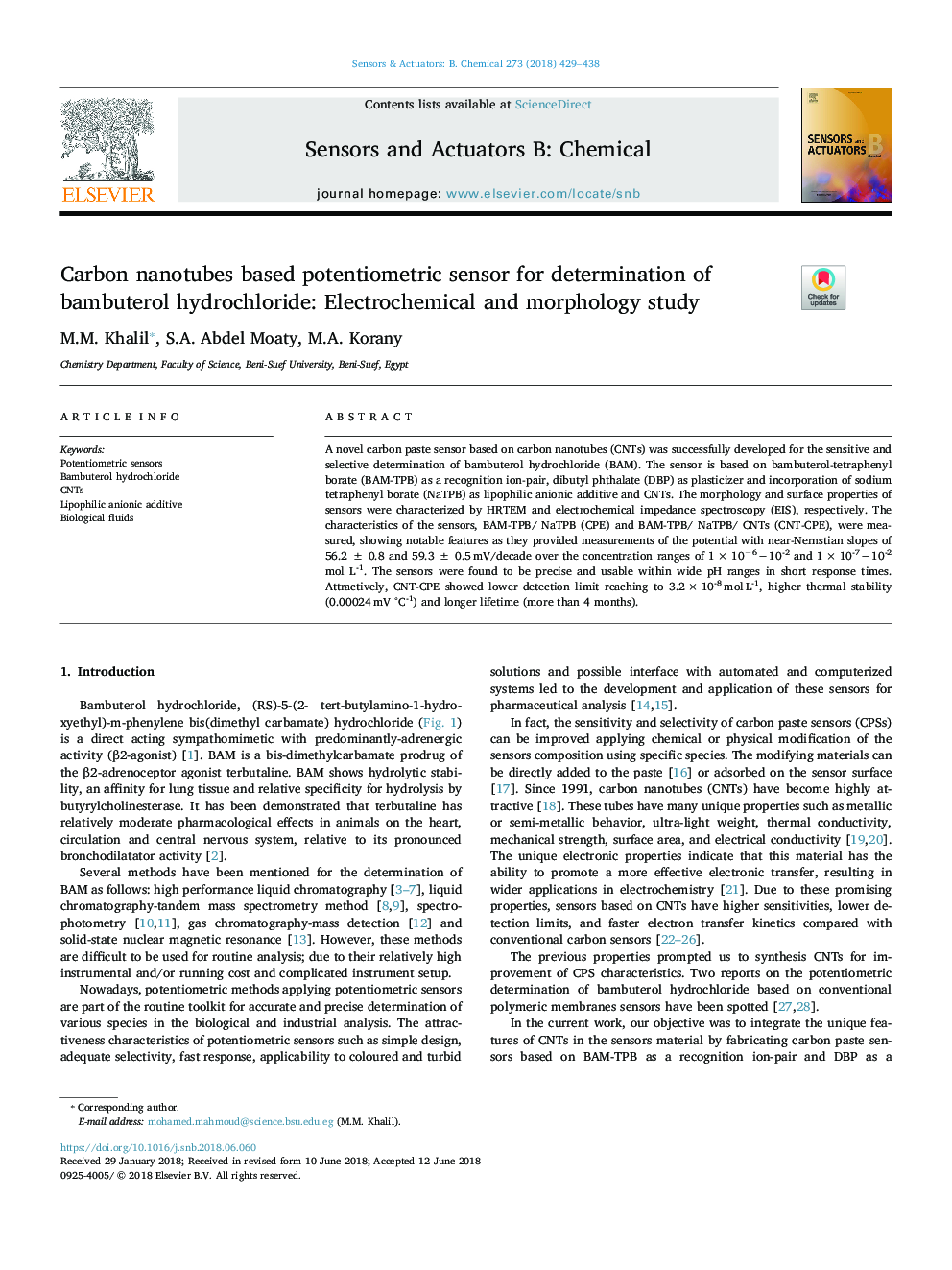| Article ID | Journal | Published Year | Pages | File Type |
|---|---|---|---|---|
| 7138786 | Sensors and Actuators B: Chemical | 2018 | 10 Pages |
Abstract
A novel carbon paste sensor based on carbon nanotubes (CNTs) was successfully developed for the sensitive and selective determination of bambuterol hydrochloride (BAM). The sensor is based on bambuterol-tetraphenyl borate (BAM-TPB) as a recognition ion-pair, dibutyl phthalate (DBP) as plasticizer and incorporation of sodium tetraphenyl borate (NaTPB) as lipophilic anionic additive and CNTs. The morphology and surface properties of sensors were characterized by HRTEM and electrochemical impedance spectroscopy (EIS), respectively. The characteristics of the sensors, BAM-TPB/ NaTPB (CPE) and BAM-TPB/ NaTPB/ CNTs (CNT-CPE), were measured, showing notable features as they provided measurements of the potential with near-Nernstian slopes of 56.2â¯Â±â¯0.8 and 59.3â¯Â±â¯0.5â¯mV/decade over the concentration ranges of 1â¯Ãâ¯10â6â10-2 and 1â¯Ãâ¯10-7â10-2 mol L-1. The sensors were found to be precise and usable within wide pH ranges in short response times. Attractively, CNT-CPE showed lower detection limit reaching to 3.2â¯Ãâ¯10-8â¯molâ¯L-1, higher thermal stability (0.00024â¯mV °C-1) and longer lifetime (more than 4 months).
Related Topics
Physical Sciences and Engineering
Chemistry
Analytical Chemistry
Authors
M.M. Khalil, S.A. Abdel Moaty, M.A. Korany,
